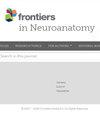NeuroEditor: a tool to edit and visualize neuronal morphologies
IF 2.1
4区 医学
Q1 ANATOMY & MORPHOLOGY
引用次数: 0
Abstract
The digital extraction of detailed neuronal morphologies from microscopy data is an essential step in the study of neurons. Ever since Cajal’s work, the acquisition and analysis of neuron anatomy has yielded invaluable insight into the nervous system, which has led to our present understanding of many structural and functional aspects of the brain and the nervous system, well beyond the anatomical perspective. Obtaining detailed anatomical data, though, is not a simple task. Despite recent progress, acquiring neuron details still involves using labor-intensive, error prone methods that facilitate the introduction of inaccuracies and mistakes. In consequence, getting reliable morphological tracings usually needs the completion of post-processing steps that require user intervention to ensure the extracted data accuracy. Within this framework, this paper presents NeuroEditor, a new software tool for visualization, editing and correction of previously reconstructed neuronal tracings. This tool has been developed specifically for alleviating the burden associated with the acquisition of detailed morphologies. NeuroEditor offers a set of algorithms that can automatically detect the presence of potential errors in tracings. The tool facilitates users to explore an error with a simple mouse click so that it can be corrected manually or, where applicable, automatically. In some cases, this tool can also propose a set of actions to automatically correct a particular type of error. Additionally, this tool allows users to visualize and compare the original and modified tracings, also providing a 3D mesh that approximates the neuronal membrane. The approximation of this mesh is computed and recomputed on-the-fly, reflecting any instantaneous changes during the tracing process. Moreover, NeuroEditor can be easily extended by users, who can program their own algorithms in Python and run them within the tool. Last, this paper includes an example showing how users can easily define a customized workflow by applying a sequence of editing operations. The edited morphology can then be stored, together with the corresponding 3D mesh that approximates the neuronal membrane.神经编辑器:编辑和可视化神经元形态的工具
从显微镜数据中以数字方式提取详细的神经元形态是研究神经元的重要步骤。自卡哈尔的研究工作以来,神经元解剖学的获取和分析为我们深入了解神经系统提供了宝贵的资料,使我们现在对大脑和神经系统的许多结构和功能方面有了超越解剖学视角的理解。不过,获取详细的解剖数据并非易事。尽管最近取得了一些进展,但获取神经元细节仍然需要使用劳动密集型、易出错的方法,这些方法容易造成误差和错误。因此,获取可靠的形态描记通常需要完成后处理步骤,这些步骤需要用户干预,以确保提取数据的准确性。在这一框架内,本文介绍了 NeuroEditor,这是一种用于可视化、编辑和修正先前重建的神经元描记的新软件工具。该工具专为减轻与获取详细形态相关的负担而开发。NeuroEditor 提供一套算法,可自动检测描记中是否存在潜在错误。用户只需轻点鼠标,该工具就能帮助用户发现错误,从而手动或自动纠正错误。在某些情况下,该工具还能提出一套自动纠正特定类型错误的操作。此外,该工具还允许用户直观地比较原始描记和修改后的描记,并提供近似神经元膜的三维网格。该网格的近似值可即时计算和重新计算,以反映描记过程中的任何瞬时变化。此外,用户还可以轻松扩展 NeuroEditor,用 Python 编写自己的算法并在工具中运行。最后,本文举例说明了用户如何通过应用一系列编辑操作来轻松定义自定义工作流程。编辑后的形态可以连同近似神经元膜的相应三维网格一起存储。
本文章由计算机程序翻译,如有差异,请以英文原文为准。
求助全文
约1分钟内获得全文
求助全文
来源期刊

Frontiers in Neuroanatomy
ANATOMY & MORPHOLOGY-NEUROSCIENCES
CiteScore
4.70
自引率
3.40%
发文量
122
审稿时长
>12 weeks
期刊介绍:
Frontiers in Neuroanatomy publishes rigorously peer-reviewed research revealing important aspects of the anatomical organization of all nervous systems across all species. Specialty Chief Editor Javier DeFelipe at the Cajal Institute (CSIC) is supported by an outstanding Editorial Board of international experts. This multidisciplinary open-access journal is at the forefront of disseminating and communicating scientific knowledge and impactful discoveries to researchers, academics, clinicians and the public worldwide.
 求助内容:
求助内容: 应助结果提醒方式:
应助结果提醒方式:


